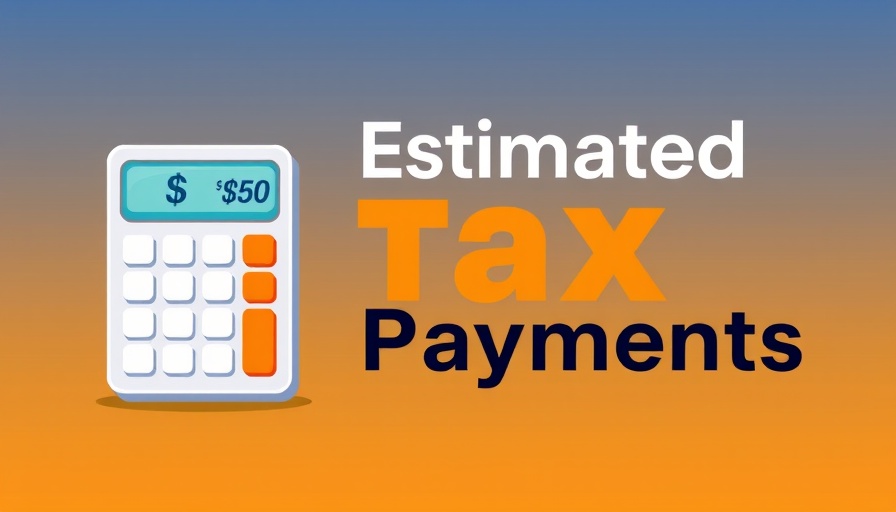
Understanding Estimated Tax Payments
If you’re among the many individuals earning non-wage income such as from self-employment, investments, or pensions, understanding the requirement for estimated tax payments is crucial. Many might not realize that these payments help prevent tax bills from piling up when tax season arrives.
Who Needs to Pay Estimated Taxes?
Any individual who expects to owe at least $1,000 in taxes upon filing is generally required to make quarterly estimated payments. This includes sole proprietors, partners, and those involved as shareholders in S corporations. On the business front, corporations need to make these payments if their tax liability is anticipated to amount to $500 or more.
When Are Payments Due?
For those filing for the 2025 tax year, the due dates for estimated tax payments are predetermined. Be sure to mark your calendar for: April 15, June 16, September 15, and January 15, 2026. Missing these dates can lead you dire consequences, including penalty fees.
The Benefits of Making Payments
Besides avoiding last-minute chaos during tax season, making estimated payments helps individuals avoid penalties and interest on unpaid taxes. It also allows you to manage your cash flow better throughout the year—a crucial aspect for those relying on variable income.
Getting Help When You Need It
Should you encounter any tax-related issues beyond your control, remember that there’s support available. The Taxpayer Advocate Service (TAS) provides assistance for those struggling to resolve tax problems. The qualifying tool on their platform can help you identify if you’re eligible for support.
 Add Row
Add Row  Add
Add 




 Add Row
Add Row  Add
Add 

Write A Comment